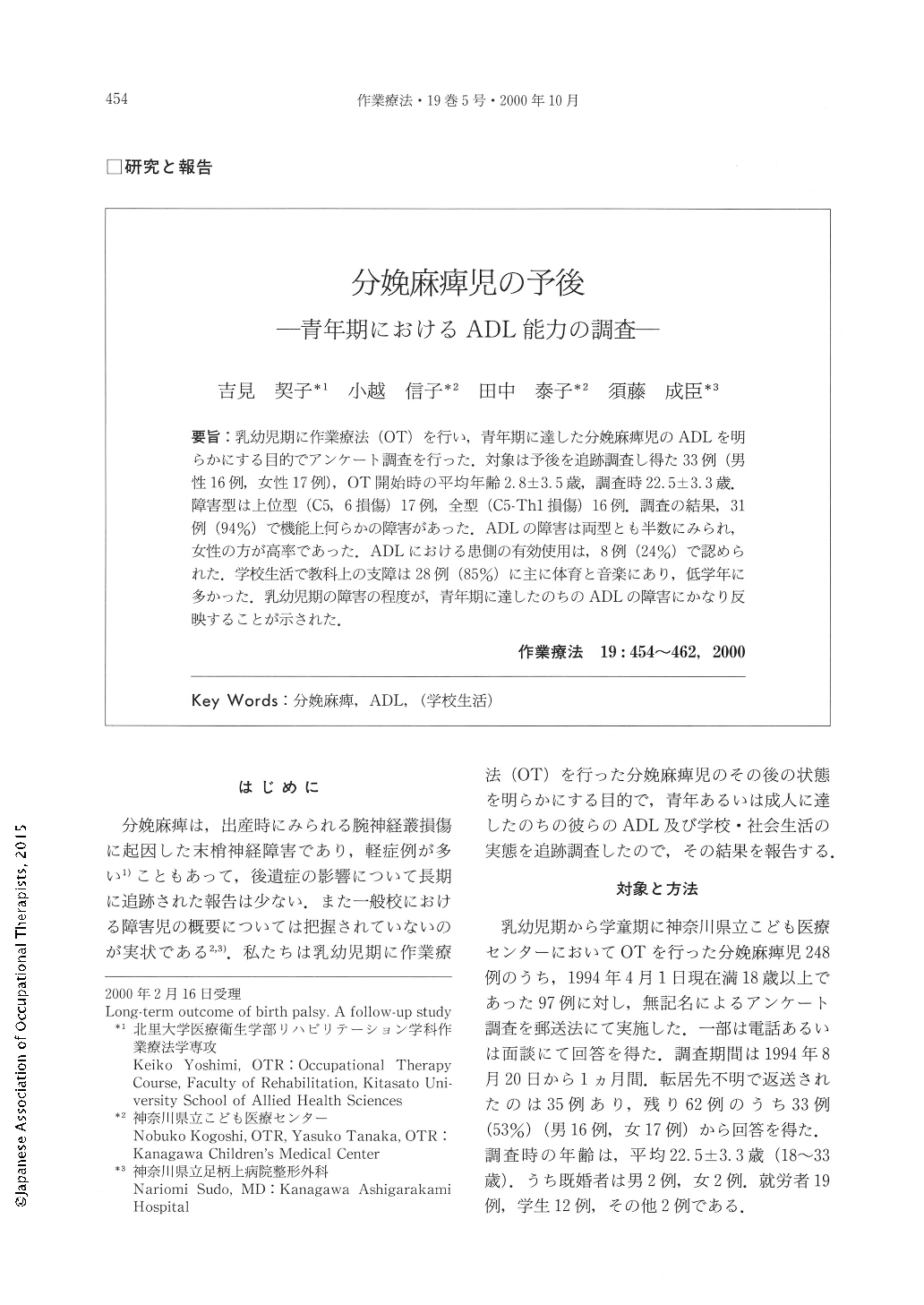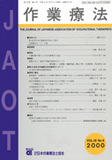Japanese
English
- 販売していません
- Abstract 文献概要
- 1ページ目 Look Inside
- 参考文献 Reference
- サイト内被引用 Cited by
要旨:乳幼児期に作業療法(OT)を行い,青年期に達した分娩麻痺児のADLを明らかにする目的でアンケート調査を行った.対象は予後を追跡調査し得た33例(男性16例,女性17例),OT開始時の平均年齢2.8±3.5歳,調査時22.5±3.3歳.障害型は上位型(C5,6損傷)17例,全型(C5-Th1損傷)16例.調査の結果,31例(94%)で機能上何らかの障害があった.ADLの障害は両型とも半数にみられ,女性の方が高率であった.ADLにおける患側の有効使用は,8例(24%)で認められた.学校生活で教科上の支障は28例(85%)に主に体育と音楽にあり,低学年に多かった.乳幼児期の障害の程度が,青年期に達したのちのADLの障害にかなり反映することが示された.
The purpose of this study was to clarify whether paralysis of the arm caused by delivery adversely affected subsequent school life and activities of daily living (ADL) in adolescence.
The presence and effects of long-term disability were examined for patients with birth palsy who had received occupational therapy during infancy at Kanagawa Children's Medical Center. The mean age for the initiation of occupational therapy was 2.8 + 3.5 years. Follow-up data were obtained from 33 patients over 18 years of age by mailed questionnaire (the mean age of 22. 5 ±3. 3 years) (53% response rate). Patients were classified into two groups according to the location of injury in the brachial plexus: the upper type (injuries of upper brachial plexus ; C5-6, 17 cases) and total type (injuries of total brachial plexus I C5-Th1, 16 cases).
Survey responses revealed that 31 patients (94%) continued to suffer from physical handicaps such as limited range of motion (ROM), muscle weakness, sensory disturbance, and/or a difference in the length of the arms. Furthermore, half of all patients experienced difficulty in performing ADL, particularly during eating, dressing, washing the face and bathing. 28 patients (85%) experienced difficulty during school life, especially in physical education and playing musical instruments. These disabilities were experienced by patients with either type of paralysis and, in addition, occurred more frequently in woman than in men.
The results of this study indicate that birth palsy continues to adversely affect many patients' subsequent school life and the performance of ADL in adolescence.

Copyright © 2000, Japanese Association of Occupational Therapists. All rights reserved.


